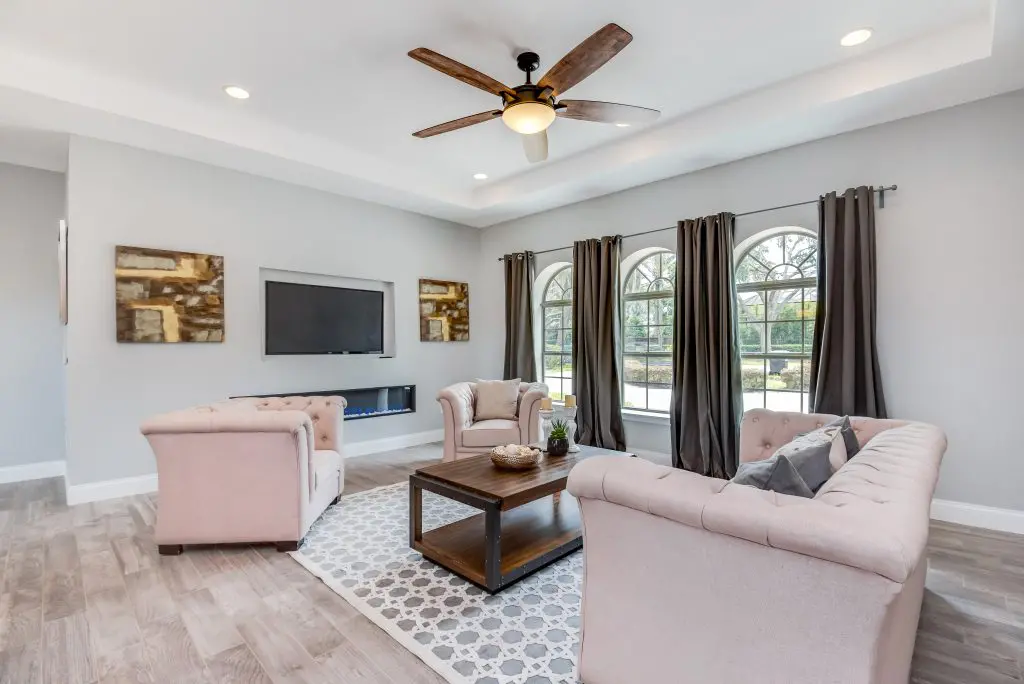Home staging is the art of preparing a house for sale to make it more appealing to potential buyers. It involves arranging furniture, decorating, and sometimes even making minor repairs to showcase the property in its best light. The primary goal of home staging is to create an inviting and attractive environment that helps buyers imagine themselves living in the space.
Effective staging can transform a cluttered or outdated home into a showcase of its potential. By presenting a home in the best possible condition, sellers can highlight its features and create a strong first impression. This process often leads to quicker sales and higher offers. Staging is not just about aesthetics; it’s also about strategically positioning the home to appeal to a broad range of buyers.
With the real estate market becoming increasingly competitive, home staging has become an essential tool for sellers. It’s a way to stand out from the competition and make sure your home is memorable. Whether you’re selling a small condo or a large family house, staging can make a significant difference in the sale process.
The Benefits of Home Staging
How Staging Can Increase Your Home’s Value
Home staging can significantly increase a property’s value. When a home is staged effectively, it appears more attractive and well-maintained, which can justify a higher asking price. Potential buyers are often willing to pay more for a home that looks move-in ready and appealing. Staging helps to highlight the best features of the property, making it more desirable and potentially increasing the final sale price.
The Impact on Selling Time
Homes that are staged generally sell faster than those that are not. A well-staged home stands out in listings and attracts more interest from buyers. When a property looks inviting and well-cared-for, it generates more excitement and urgency. This increased interest can lead to quicker offers and a shorter time on the market, which is beneficial for both sellers and buyers.
Attracting More Potential Buyers
Staging can help to attract a larger pool of potential buyers. A beautifully staged home appeals to a wider audience and makes it easier for buyers to envision themselves living there. By presenting the home in a way that highlights its strengths and creates an emotional connection, staging can draw in more interested parties and increase the likelihood of a sale.
Key Elements of Effective Home Staging
Decluttering and Cleaning
One of the first steps in home staging is decluttering and cleaning the space. Removing excess items and personal belongings helps to create a more open and neutral environment. Cleanliness is crucial, as a spotless home gives the impression of being well-maintained. Focus on high-traffic areas like kitchens, bathrooms, and living rooms. Decluttering not only makes the home look larger but also allows buyers to better envision their own belongings in the space.
Furniture Arrangement and Layout
Arranging furniture strategically is essential in home staging. The goal is to create a functional and inviting layout that showcases the flow and purpose of each room. Avoid overcrowding spaces with too much furniture, as this can make rooms feel smaller. Instead, opt for a layout that highlights the room’s best features and allows for easy movement. Consider the scale and proportion of furniture to ensure that each piece complements the space.
Choosing the Right Colors and Themes
Color schemes and themes play a significant role in staging. Neutral colors, such as beige, gray, and white, are often preferred as they appeal to a broader audience and help buyers focus on the home’s features rather than its decor. Adding accents through pillows, rugs, or artwork can provide a touch of personality without overwhelming the space. Consistency in theme throughout the home helps create a cohesive and attractive environment.
Lighting and Ambiance
Lighting is a crucial aspect of Home Staging. Good lighting can make a home feel warm and welcoming. Ensure that each room is well-lit with a mix of natural and artificial light sources. Use lamps, overhead lights, and even candles to enhance the ambiance. Bright, well-lit spaces appear larger and more inviting. Additionally, consider the time of day when showing the home, as natural light can greatly affect the home’s appearance.
DIY Home Staging Tips
Simple Updates to Enhance Appeal
For those looking to stage their home on a budget, simple updates can make a big difference. Freshening up the paint, updating cabinet hardware, and replacing old fixtures are cost-effective ways to enhance the home’s appeal. Adding new throw pillows, rugs, or curtains can also give rooms a fresh look without a significant investment. Small changes can create a modern and inviting atmosphere that attracts buyers.
Budget-Friendly Staging Ideas
Staging doesn’t have to be expensive. Budget-friendly ideas include rearranging existing furniture, adding houseplants, and using accessories like mirrors to create a sense of space. DIY cleaning and minor repairs can also improve the home’s appearance without breaking the bank. Shopping for inexpensive decor items at discount stores or online can provide additional staging options without a large expenditure.
Common Mistakes to Avoid
When staging a home, avoid common mistakes that can detract from its appeal. Over-personalizing the space with family photos or unique decor can make it harder for buyers to envision themselves in the home. Additionally, avoid cluttering rooms with too much furniture or decor, as this can make spaces feel cramped. Ensuring that each room serves a clear purpose and is staged to highlight its best features is key to a successful staging effort.
When to Consider Professional Home Staging
Signs That Professional Help Might Be Needed
Professional home staging might be necessary if your home has been on the market for an extended period without generating interest. If you’re unsure about how to present your home in the best light or if you lack the time to manage the staging process, hiring a professional can be a wise decision. Professionals have experience and expertise in creating appealing spaces that attract buyers and can provide valuable insights into market trends.
What to Expect from a Home Staging Service
A professional home staging service typically includes a consultation where the stager assesses your home and provides recommendations. They may offer full staging services, including furniture rental, decor selection, and arrangement. The goal is to present your home in its best possible condition, helping to enhance its appeal and market value. Professional stagers bring a fresh perspective and can effectively showcase your home’s strengths.
How to Choose the Right Staging Professional
Choosing the right staging professional involves researching and interviewing potential candidates. Look for stagers with a strong portfolio and positive client reviews. It’s important to select someone whose style aligns with your home’s needs and who can work within your budget. A good stager will communicate clearly, provide a detailed plan, and be responsive to your preferences throughout the staging process.
Success Stories: Real-Life Examples of Home Staging
Case Studies of Homes that Sold Faster
Real-life success stories demonstrate the impact of home staging on the sale process. For example, a home that had been on the market for several months without offers was staged and sold within weeks at a higher price. Another case involved a property that, after staging, attracted multiple offers and sold for above the asking price. These examples highlight how effective staging can lead to faster sales and better outcomes.
Testimonials from Home Sellers
Many home sellers have shared positive experiences with home staging. Testimonials often mention how staging helped to highlight the home’s best features and created a more attractive environment for buyers. Sellers frequently report increased interest and quicker sales after staging, underscoring the value of investing in this process. Positive feedback from past clients can provide reassurance and insight into the benefits of professional staging.
Conclusion
Home staging is a powerful tool for enhancing the appeal of a property and improving the chances of a successful sale. By focusing on key elements like decluttering, furniture arrangement, and lighting, sellers can create an inviting environment that attracts buyers and potentially increases the home’s value. Whether opting for DIY staging or professional services, understanding the benefits and strategies involved can make a significant difference in the home-selling process. Investing in home staging can lead to quicker sales, higher offers, and a more successful real estate experience.




